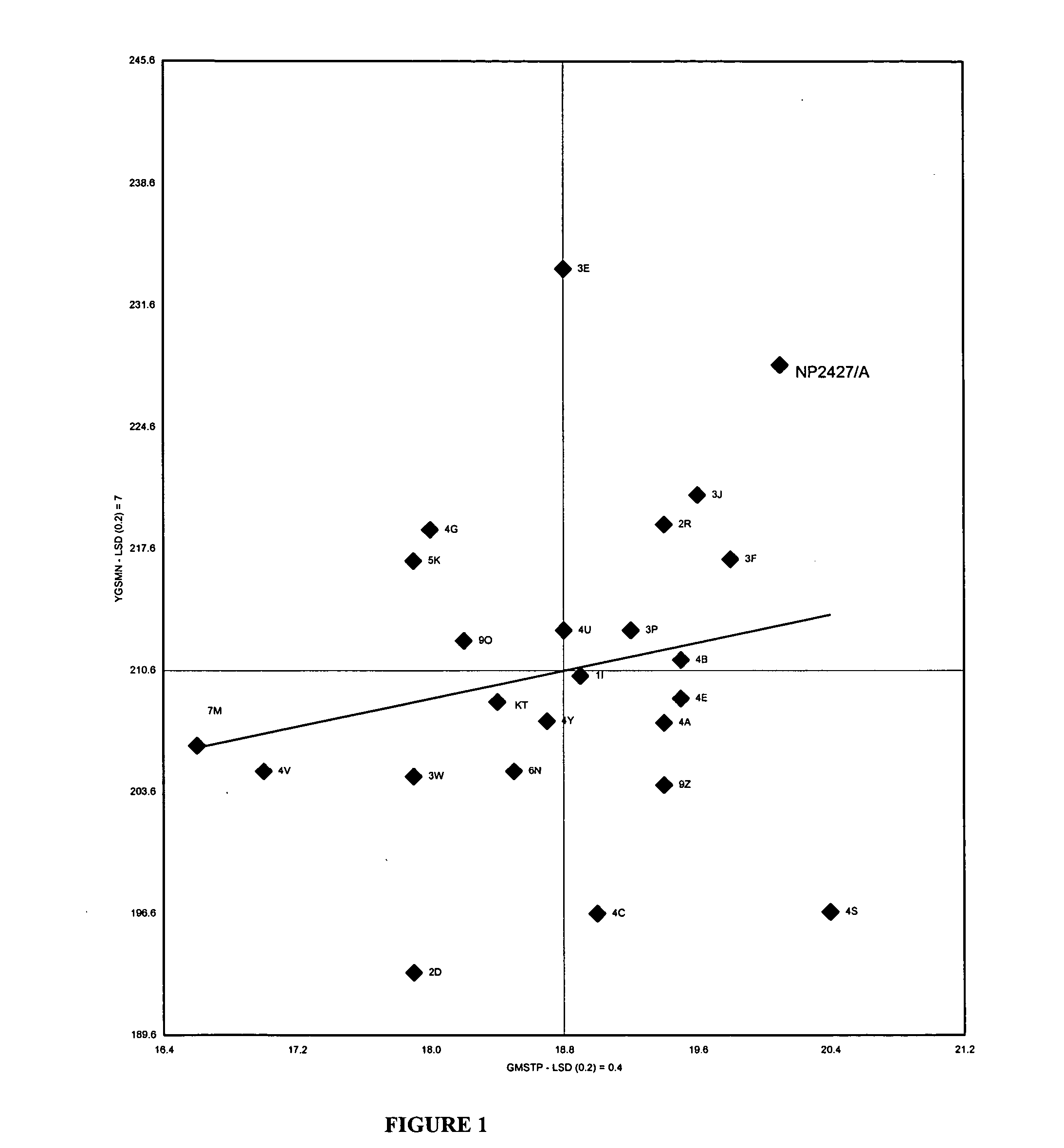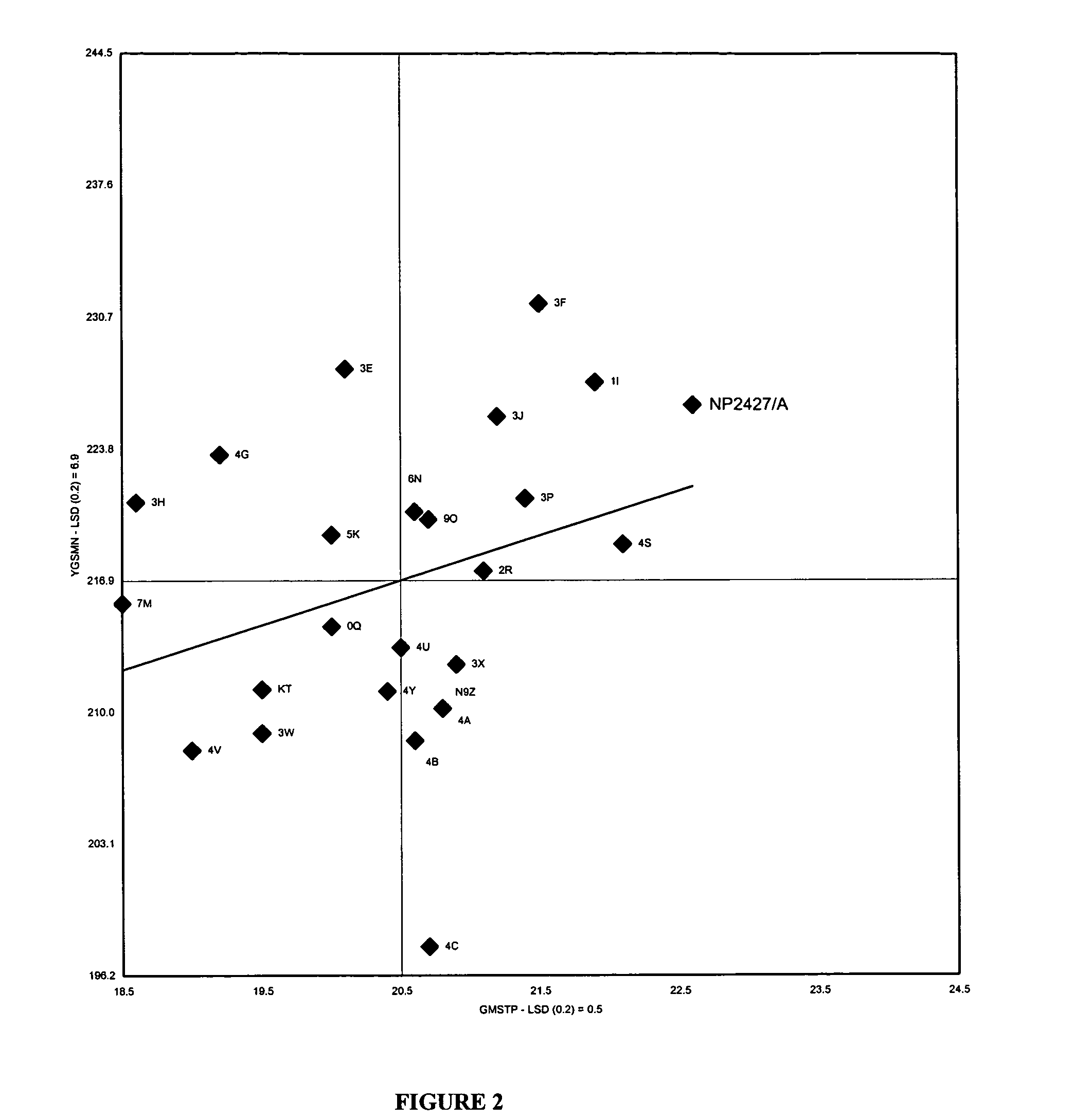Inbred maize line NP2467
- Summary
- Abstract
- Description
- Claims
- Application Information
AI Technical Summary
Benefits of technology
Problems solved by technology
Method used
Image
Examples
Embodiment Construction
[0023] Inbred maize lines are typically developed for use in the production of hybrid maize lines. Inbred maize lines need to be highly homogeneous, homozygous and reproducible to be useful as parents of commercial hybrids. There are many analytical methods available to determine the homozygotic and phenotypic stability of these inbred lines.
[0024] The oldest and most traditional method of analysis is the observation of phenotypic traits. The data is usually collected in field experiments over the life of the maize plants to be examined. Phenotypic characteristics most often observed are for traits associated with plant morphology, ear and kernel morphology, insect and disease resistance, maturity, and yield.
[0025] In addition to phenotypic observations, the genotype of a plant can also be examined. There are many laboratory-based techniques available for the analysis, comparison and characterization of plant genotype; among these are Isozyme Electrophoresis, Restriction Fragment ...
PUM
| Property | Measurement | Unit |
|---|---|---|
| Fraction | aaaaa | aaaaa |
| Fraction | aaaaa | aaaaa |
| Time | aaaaa | aaaaa |
Abstract
Description
Claims
Application Information
 Login to view more
Login to view more - R&D Engineer
- R&D Manager
- IP Professional
- Industry Leading Data Capabilities
- Powerful AI technology
- Patent DNA Extraction
Browse by: Latest US Patents, China's latest patents, Technical Efficacy Thesaurus, Application Domain, Technology Topic.
© 2024 PatSnap. All rights reserved.Legal|Privacy policy|Modern Slavery Act Transparency Statement|Sitemap


